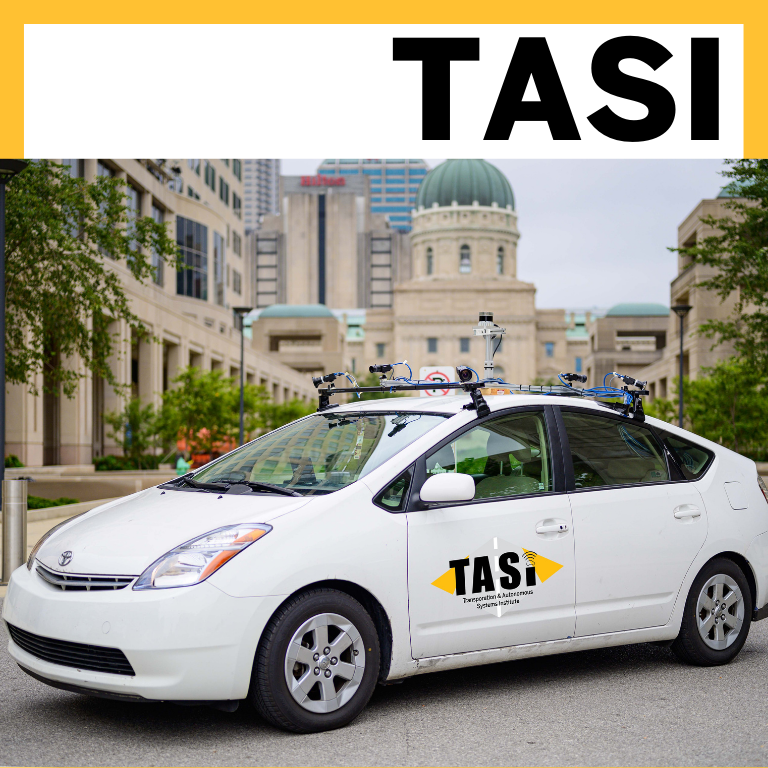Transportation and Autonomous Systems Institute
The world is becoming increasingly urbanized. Since 2007, more than half the world’s population has been living in cities, and that figure is expected to rise to 60 percent by 2030. Cities and metropolitan areas are powerhouses of economic growth, contributing about 60 percent of global GDP. However, they also account for about 70 percent of global carbon emissions and over 60 percent of resource use. Rapid urbanization is resulting in a growing number of slum dwellers, inadequate and overburdened infrastructure and transportation services, worsening air pollution and unplanned urban sprawl.
How will Electrified and Autonomous Vehicles (EAV) change the nature of our cities? What contribution can they make to the UN’s Sustainable Development Goals (SDGs); designed to be a "blueprint to achieve a better and more sustainable future for all". Electrified and Autonomous Vehicle (EAV) transportation systems and technologies have the potential to disrupt the status quo, alter how people live and work, rearrange value pools, and lead to entirely new products and services. This requires decisions on how to invest in new forms of education and infrastructure, by discerning how disruptive economic change will affect comparative advantages.
 According to director Yaobin Chen, the mission of IUPUI’s Transportation and Autonomous Systems Institute (TASI), and its cluster of research centers, faculty, and staff, is to conduct world-class research in connected and autonomous vehicles and intelligent transportation systems through collaboration and partnership with academics, industry, government, and other organizations.
According to director Yaobin Chen, the mission of IUPUI’s Transportation and Autonomous Systems Institute (TASI), and its cluster of research centers, faculty, and staff, is to conduct world-class research in connected and autonomous vehicles and intelligent transportation systems through collaboration and partnership with academics, industry, government, and other organizations.
EAV systems and digital tools will enable Demand Responsive Transportation (DRT) that is agile—fast, flexible, responsive, and resilient—which will increase car-sharing, reduce traffic congestion and air pollution. EAV and advanced driver assistance systems have the potential to reduce motor vehicle deaths by an estimated 90 percent, saving thousands of lives and roughly $190 billion every year in health care costs. (For example, an autonomous vehicle can easily find a parking spot on its own, they will make public transport easier and more convenient. Extra space will be available on our streets for bike lanes and wider sidewalks, making walking and biking safer and more appealing.)
UN Sustainable Development Goal #11 specifically states that, by 2030, we will be able to provide access to safe, affordable, accessible, and sustainable transport systems for all, improving road safety, notably by expanding public transport, with special attention to the needs of those in vulnerable situations, including women, children, persons with disabilities and older persons.
 Clayton Nicholas, IUPUI’s Industry Research Development Specialist, says that one example of TASI’s engagement to further SDG #11 is the support of the coalition of Toyota’s Mobility Foundation, the Indiana Economic Development Corporation, and the Energy Systems Network, in their Together in Motion initiative. The Together in Motion in Indiana initiative supports the concept of “Mobility for All”, demonstrating the commitment to the goal of sustainable cities.
Clayton Nicholas, IUPUI’s Industry Research Development Specialist, says that one example of TASI’s engagement to further SDG #11 is the support of the coalition of Toyota’s Mobility Foundation, the Indiana Economic Development Corporation, and the Energy Systems Network, in their Together in Motion initiative. The Together in Motion in Indiana initiative supports the concept of “Mobility for All”, demonstrating the commitment to the goal of sustainable cities.
Together in Motion in Indiana is designed to improve the overall movement of people and goods in the changing mobility ecosystem of central Indiana, as underscored in their motto: “Pioneering innovative mobility technologies in the U.S. heartland. There are currently three deployments; an autonomous vehicle shuttle to facilitate the movement of people from the Rapid Transit Station to the western part Indianapolis; an autonomous vehicle shuttle in downtown Fishers, IN; and a contactless goods delivery service for the Indianapolis near Eastside.
Research on EAV technology is a critical part of the vision for the transition to safe transportation. TASI’s research also envisions “Mobility for All” which will have considerable societal benefits. Therefore, TASI is not solely focused on EAV technology alone, but also how autonomous vehicles will be deployed equitably (i.e., the elderly, disabled, rural and urban individuals etc.) Traditionally it is after a new technology or service is deployed that discussions begin on the safety, security, ethics, and policies needs that govern optimal implementation. That is not the case in this IUPUI initiative. EAV technologies have the potential to disrupt the status quo, alter how people live and work, rearrange value pools, and lead to entirely new products and services. This requires decisions on how to invest in new forms of education and infrastructure, by discerning how disruptive economic change will affect comparative advantages. Mobility is as important to the poor as it is to the affluent, to the elderly as it is to the young or whether you reside in a city or rural area. EAV technologies have the potential to disrupt the status quo, alter how people live and work, rearrange value pools, and lead to entirely new products and services. This requires decisions on how to invest in new forms of education and infrastructure, by discerning how disruptive economic change will affect comparative advantages.
Below are the other SDG’s that align with TASI’s research cluster’s vision and mission:
- SDG 1 No Poverty: Better access to transportation will increase the range of job opportunities.
- SDG 2 Zero Hunger: Autonomous vehicles could fill voids in food deserts.
- SDG 3 Good Health and Well-being: Transportation and mobility for disabled and elderly individuals is known to improve their health and reduce burden on caregivers along with drastically reducing the number of vehicle fatalities that occur annually which is 34,000 in the US alone.
- SDG 5 Gender Equality: Providing opportunities in emerging STEM fields through EAV systems.
- SDG 7 Affordable and Clean Energy: EAV systems will reduce dependence on fossil fuels and improve energy efficiency.
- SDG 8 Decent Work and Economic Growth: Job creation will be driven by an entirely new eco-system of EAV-related business opportunities, while better access to transportation will increase the range of job opportunities.
- SDG 9 Industry, Innovation, and Infrastructure: EAV’s will create a new level of agile logistics and new infrastructure needs – smart cities, roads, urban and rural.
- SDG 10 Reducing Inequality: Mobility can be the great equalizer, allowing individuals to take advantage of opportunities outside a narrow sphere.
- SDG 11 Sustainable Cities and Communities: Quality transportation and mobility is essential to sustain vibrant cities and communities.
- SDG 12 Responsible Consumption and Production: An EAV system uses less components, are more reliable, and creates less waste.
- SDG 13 Climate Action: EAV systems will reduce dependence on fossil fuels and improve energy efficiency.
Saving Lives and Limbs on the Road - Making the World a Better Place with the SDGs
Razi Nalim, Associate Dean for Research, presented his work with TASI in a 5-minute video as a part of the 2022 IUPUI International Festival - IUPUI SDG Day.


